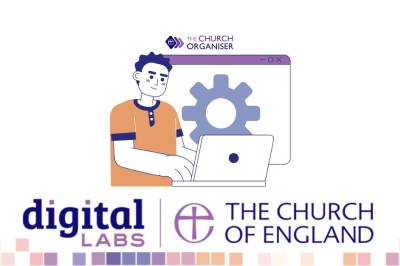17/02/2021
Learn more about livestreaming by accessing our guide here.
What does a view really mean?
A view is exactly what it says on the tin - a viewing of your video. However, if you have 100 views, that doesn't necessarily mean that your entire video was watched by 100 people.
One person could watch your video three times, and this would result in three views. A view doesn't always equate to a full-length watch either - it depends on the platform, but most social media analytics break down views into one-second views, three-second views, ten-second views etc.
The number of views will often decrease as the length of your video increases, but don't be disheartened. A person that has watched three seconds of your video has seen three seconds more than someone that hasn't, and, now that they've had a taster and opportunity to familiarise themselves with your church, they might watch more next time.
How to find the view count
YouTube
Firstly, head over to YouTube studio and select Analytics in the left-hand menu. This takes you to an overview of your account channel over the past four weeks. This initial graph shows you total views across all videos in the past 28 days, the spread across the weeks and even compares it with the previous 28 days to tell you if your views are higher or lower than usual.
If you would like to see more than the past four weeks, change the time range in the top right corner. You can choose between the last 7, 28, 90, 365 days or lifetime.
Next, explore each video on your channel by clicking Content in the left-hand menu. This provides a list of all your videos and is also searchable using the bar at the top. Once you have chosen a video to analyse, hover over it and click the second symbol - a box with a bar graph (it will say Analytics when hovering over). Alternatively, from the individual videos main page on YouTube, you can click Analytics in the bottom right.
From here, explore an overview of the total video views similarly to how you did across all videos on the channel. Don’t forget to check the time frame in the top right corner.
Navigate to Facebook creator studio and select Insights from the left-hand menu. Similarly to YouTube, there is a drop-down box at the top of the page allowing you to select the time frame. Below this are five different stats.
The first is how many total minutes have been viewed of all your videos in the above timeline. The second and third number tells you how many one-minute views and how many three-seconds views you have received respectively, and, whether they are up or down compared to the previous period.
To view individual video views, scroll down the page and click on the video (note: this will only show the video if it’s been viewed in the selected period selected at the top of the page). Once on the video, scroll down to viewer activity. Here you will find the three-second, 15-second and one-minute views. This is the duration people have engaged with the service.
What other numbers can we track?
YouTube
YouTube studio allows you to view a range of additional statistics relating to reach, engagement and audience, which are useful. Take some time to look through to better understand the audience that is engaging with your services.
If this is overwhelming or you are rushed for time, some recommendations are covered below:
Audience retention
This can be found both on the Overview or Engagement tab. This figure tells you the percentage of your service that people are viewing, on average. It also tells you that time in minutes, for example, 14:35, 38.2%.
This number is a great indication of how well your content is performing. Whilst it can be great to have many views you also want people to be engaging with the content for longer, having a more meaningful time and experience.
Age and gender
Find this number on the Audience tab. It is always important to understand your audience demographic. There may be a certain age group you are excelling in reach and others you are barely reaching. This allows you to plan your future services around this data, both encourage new age ranges whilst continuing to engage in the ages you are currently exceeding in.
Top geographies
This figure can also be found under the Audience tab. The beauty of online services is that you can reach people further afield than ever before. This could be something you are already achieving and unaware of or something you would like to explore.
Traffic source: external
This can be seen via the Reach tab. This allows you to see where people have accessed your service from. If you use the same amount of advertising across social media channels but Facebook draws in more traffic, it could be worth spending more time inviting your community to your service from Facebook, or improving how you invite from other social media channels.
Facebook creator studio allows you to see engagements with the post as well as demographics.
Engagements
The Post overview section allows you to see how many engagements you saw in the whole post but also in a live broadcast or premiere if you choose to post your services in that way. You can see total engagements and the split of reactions, comments and shares. This is arguably of more value than a three-second view because someone has taken the time to engage with the post, showing they appreciate the service.
Demographics
In the same way, mentioned above, under the YouTube studio section, age, gender and location can be very valuable in increasing your reach or improving your service. This can be found at the bottom of the page under the Audience section.
What can we do with the data?
Once you've delved into the analytics behind your online services, consider these questions to help see the opportunities and create a report to share with others:
- Each month, take a look at the view count alongside audience retention. Are these numbers going up or down month to month?
- Does the age and gender watching our services reflect our church community? Do we need to do something different to engage with a group we are not seeing join the online service?
- When and how are our community engaging with likes, comments and shares? Are we seeing more or less engagements month to month?
- Is there one particular video which received more views, likes, comments and shares than others? Why could this be?
It's not just about numbers
While numbers and data give us a good indication of how our community is engaging, other factors are important to consider too. One comment, sharing a personal story of discovering faith or of the peace they found in your service, might reveal more than five people commenting emojis. These meaningful engagements can help you connect with your community, discover what they value, and understand how your online presence can best serve them.
Reading, and responding, to comments is one of the most useful ways that we connect with our audience on the Church of England social accounts. You might also experience people joining your services online or onsite, or see members of your community share your church's posts in groups or on their profiles. These are all encouraging signs, which can be useful to consider alongside the data.
The clue is in the name: the key to social media success is being social. It's a great idea to check your analytics regularly, but don't forget to check the actual comments too - not just the data.
Iso Neville and Jenny Wilkins
Church of England Digital Team
Keep up to date with all things digital and join our Digital Labs newsletter



